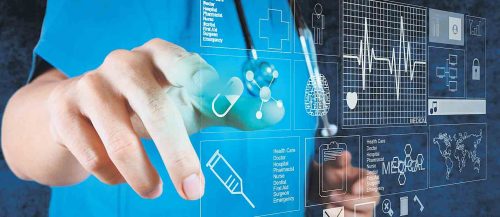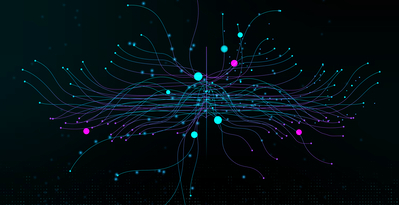AI for Problem Solving
3AI June 15, 2018

It is critical that public services ramp up their data sets, identify partners for ideation and leverage technology
For all its growth and development since independence, India faces many systemic problems. From our complex and labyrinthine legal system to the inefficiencies in our agricultural sector, large-scale problems still abound.
We need to better connect our burgeoning population with basic facilities. While Artificial Intelligence may not be the panacea in itself, we need to harness its potential to improve living conditions. Thankfully, we have the intellectual capital – our information technology peers – that can bring substantial dividend in this arena. By combining our inherent technological prowess and the keenness of our government in promoting technology-led interventions, AI can truly be a game-changer for India. Here’s an India-specific perspective on how AI can be a force for good for our country.
Agriculture Sector
Though the agricultural sector sees piecemeal improvements, numerous problems go unresolved – from low yield, low predictability of yield, poor access to institutional credit and financing to lack of transparency around pricing for produce. Using AI, agriculture can be transformed by:
• Provision of on-demand information on quality of seeds, fertilizers, pesticides and the track record of providers and opportunities for mechanisation through better equipment. This can be done through bot-enabled ‘Kisan Helplines’ that can provide guided advice for improving productivity
• Improving predictability of yield by ingesting data on soil health, equipment quality, farmer activity and weather conditions
• Improving visibility of market price trends for crops produced (domestic and international) so that they can make informed decisions on pricing, while exploring going to market without intermediary interference
• Leveraging data from productivity, yield and forecasts and potential prices to assess creditworthiness of individual farmers. This will speed up disbursement of finance and ensure farmers get better rates for crop insurance
Smart Cities
Indian cities have grown in an extremely unplanned manner, with public infrastructure and services struggling to catch up. Consider this – the cost of traffic congestion alone in just four major cities is estimated to be $22 billion annually. With AI, urban planners can:
• Track movement of traffic and people to identify opportunities for ‘decentralising’ major hubs and develop future-ready public infrastructure to facilitate smoother movement of people, vehicles and goods
• Model population density and availability of sanitation facilities to improve access. Additionally, by applying image analytics on drone surveilled images can help determine quality of sanitation facilities and accelerating their upkeep
• Identify and improve access to current and emergent residential and commercial hubs by creating more optimal public transport networks
• Align consumption of resources – energy, water, cooking gas – to actual needs
• Crowdsource, store and take action to improve infrastructure by directly soliciting participation from citizens
• Improve planning and forecasting for infrastructure development through better coordination between public works departments, leveraging traffic data and streamlining supply chains
Education System
The education system in India is among the most outdated and unequitable when compared with the developed world. Problems abound from a prominent level of student dropouts, to quality and methodology of teaching, lack of workforce readiness among students and outdated curricula. Here’s how AI can help improve certain facets:
• Track the demand for skills in the market and the educational infrastructure available to supply those skills through a National Skills Repository. This will help keep education concurrent with current market demands
• Automate routine, time-consuming tasks – from creating and grading test papers, developing personalised benchmarks for each student, identifying gaps in student development, tracking aptitude and attentiveness within each subject – and enabling teachers to focus on curriculum development, coaching and mentoring and improving behavioural and personality aspects of students
• Identify potential dropouts and root-causes, enabling educational institutions to take proactive steps to ensure student retention and course completion
Healthcare
The doctor-to-patient ratio in India is quite poor – with 0.62 doctors available per 1,000 people (WHO recommends a ratio of 1:1,000). When you add to that the inadequate spread of doctors across the country, we have a poorly served population, ranking 125th in the world for life expectancy. Using AI, we can:
• Identify areas with a high population density, which are underserved by public hospitals. Further, improve the deployment and availability of doctors, medical equipment and medication to better serve the population
• Track patient histories and clinical notes to prescribe evidence-based treatment
• Speed up routine processes such as scanning X-rays and CT-scans for malignancies using image analytics
• Improve public health studies by identifying early warning signals through alternative methods such as social media tracking
• Identify individuals without health insurance and incentivise their usage to improve patient medical adherence
Legal Challenges
When adjusted for VIP protection, India claims an extremely poor police-to-people ratio with 1 police for every 663 people. There are 27 million cases pending with courts, of which six million have been pending for over five years. AI can be a crucial enabler for our crumbling governance system and can help:
• Speed up review and summary writing of long drawn cases and their
history using natural language processing and voice recognition
• Use image analytics for surveillance and identification of wrong-doers in areas recognised for high criminal activity
• Surface fraudulent deals – especially among land deals – using anomaly detection frameworks to speed up delivery of justice
• Improve public services and transparency by routing RTI requests through intelligent bots, thus making it more efficient to get critical information
With a population of over 1.3 billion people, distributed across a huge landmass, public services urgently need technology-centric solutions that are both intelligent and scalable. AI will effectively address a number of these problems. To this end, it is critical that public services act sooner than later and ramp up their data sets, identify technology partners for ideation and apply AI techniques to power the India’s next leap forward.






